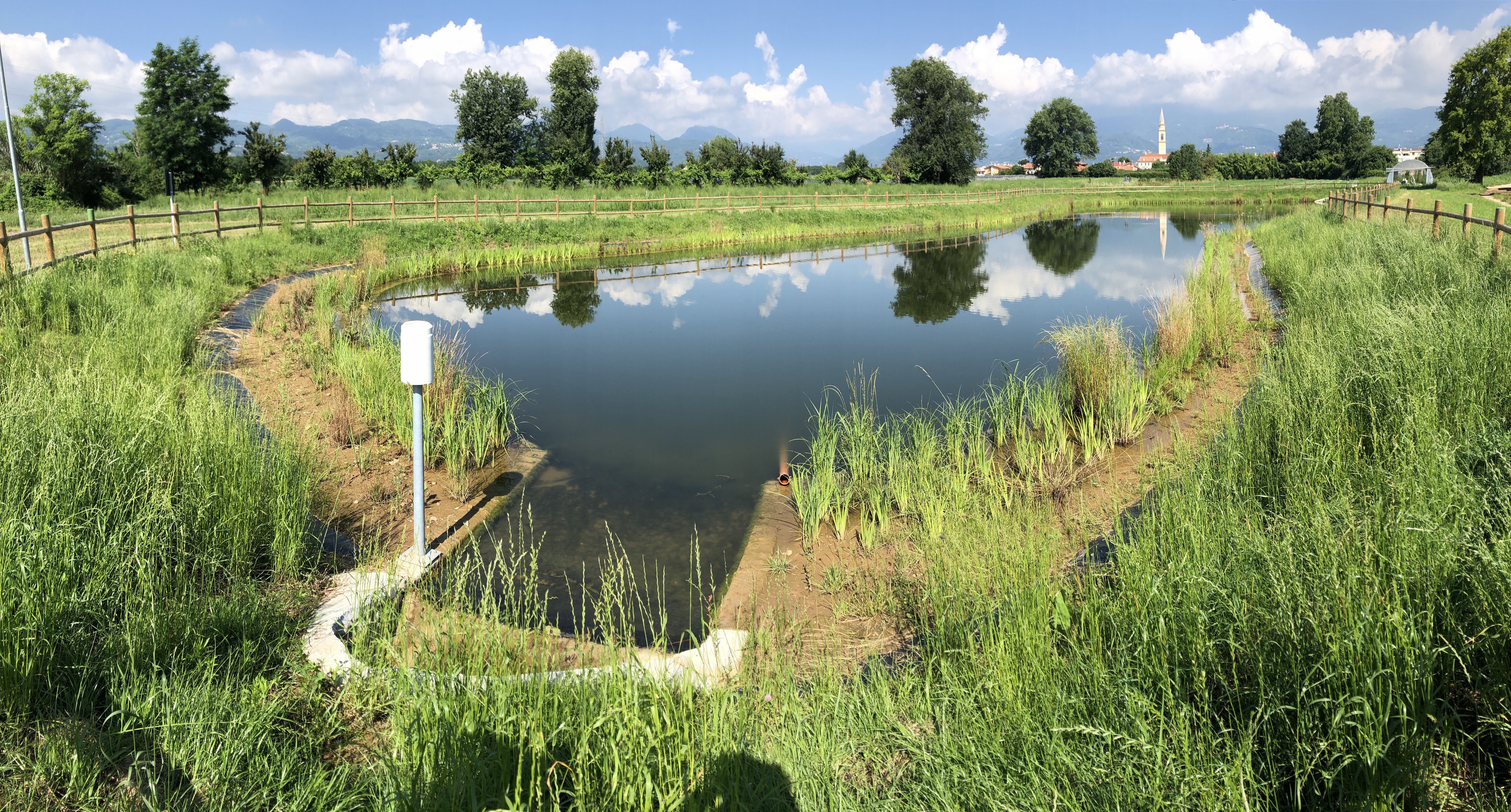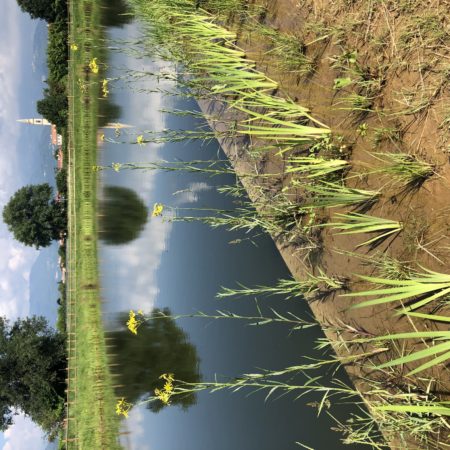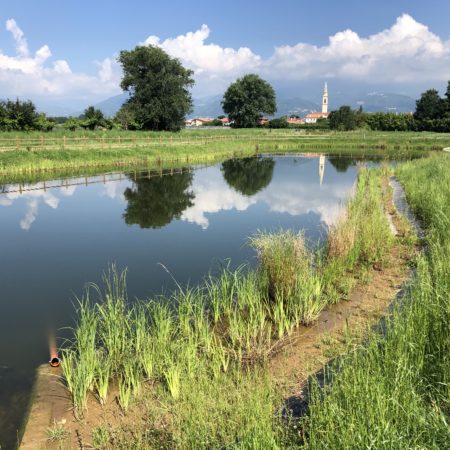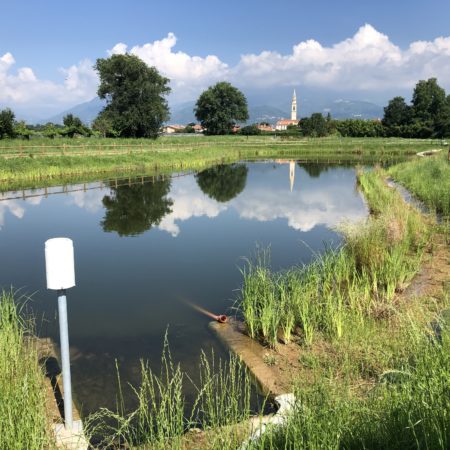
23 Jun 2020 New sustainable solutions for the improvement of the territorial hydraulic safety in the Altovicentino area
Climate change and flood risk: the LIFE BEWARE project, co-funded by the LIFE Programme of the European Union, is implementing an innovative prevention strategy adopting hydraulic risk mitigation measures in the Altovicentino area, in the Veneto Region (Italy).
In order to improve the hydraulic safety of the territory, LIFE BEWARE is promoting, with the active involvement of local communities, the adoption of Natural Water Retention Measures, which are a set of multi-functional interventions for the sustainable management of rain flows and the reduction of their impact on the territory. These measures can also bring many other benefits such as the reduction of the “heat island” effect in built-up areas and the increase in the aesthetic value of the landscape thanks to the creation of green areas. An example is represented by the water retention basin that has been developed in Giavenale di Schio, an agricultural area between Schio and Marano Vicentino municipalities.
How did we get there? Thanks to the support and collaboration of several local farmers, the project identified a territorial area which is prone to floods. In this area, a water retention basin has been built with the main aim of decreasing and slowing down the water flow and to create a water reserve for the agricultural activities of the place, especially during the periods of drought.
Giavenale di Schio is an area with portions of uncultivated land that can accommodate interesting ecological niches and plant essences. Furthermore, non-intensive farming practices are implemented. The basin, which has a capacity of 2,500 cubic meters, houses the exceeding rainwater, to contribute to the prevention of flood risk in nearby urban areas, and to recreate, at the same time, a water source for irrigation, even more valuable in periods of low rainfalls.
If we add to this the adoption of drip irrigation systems by the farmers themselves, it will be possible to boost a virtuous cycle linked to a more sustainable use of water, with the effect of a global water resource saving.
And that’s not all. Among the expected results, in addition to the overall improvement of the hydraulic situation during intense rainfall events and a more conscious use of water, an increase in biodiversity is foreseen. In fact, the construction of water infrastructures creates a new wet environment from which it is easy to predict the growth of species, both as regards birds (especially aquatic birds) and reptiles and amphibians, with a significant enrichment of the environmental quality.





Sorry, the comment form is closed at this time.